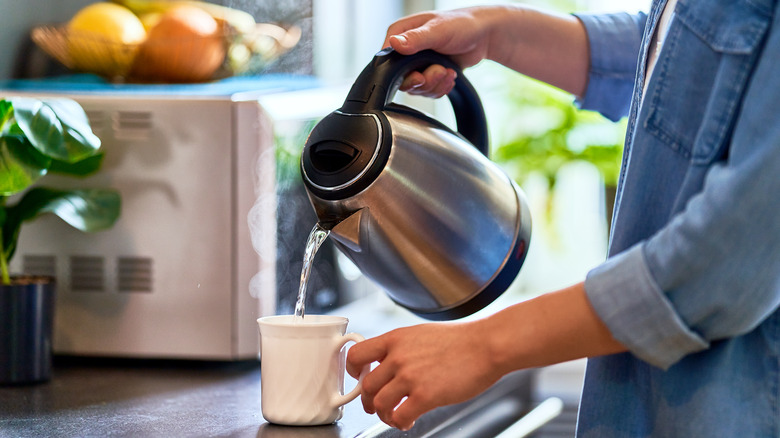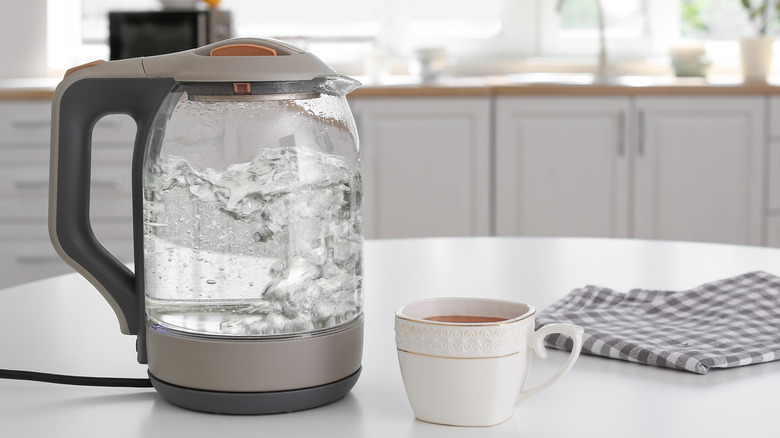Boil Water Faster With The Help Of An Electric Kettle
A watched pot never boils. At least, that's the way the saying goes — and it certainly feels true. But sometimes, it's hard to keep your eyes off the stove, especially if you're in a hurry. Next time you find yourself wishing that you could shave a few minutes off "never," turn to your electric kettle. Their rapid boil time isn't just good for a quick cup of tea. It's an easy way to bring a pot of water to a roaring boil. If you have a kettle, use it next time you're making pasta or boiling potatoes. Let your water come to a boil in the kettle before pouring it into a pot and turning the heating element on. You'll have a pot full of boiling water in a fraction of the time.
Now, if you're an American, there's a good chance you don't have a kettle in your home. Electric kettles aren't as popular in the States as they are in many other countries. But once you get one, it's hard to imagine life without one. While they may seem unnecessary, they do have advantages over a pot or stovetop kettle. First and foremost: They're straight-up more efficient. Electric kettles boil water quickly and use less electricity. That's true even in the United States, where kettles take longer to boil than their British counterparts due to the fact that American outlets top out at 127 volts, while standard U.K. outlets go up to 240.
Why are electric kettles faster?
Not everyone with a kettle is aware of this simple water boiling hack. This could be due to the myth that cold water boils faster than hot (though hot water can freeze faster than cold). Even if you don't have a kettle, you might be able to shave off some time by using hot tap water instead of cold. Now, the amount of time that it takes to boil water will vary. This goes for both stovetops and electric kettles. Electric stoves generally boil water faster than gas, and wider pots will boil faster than narrow ones. Some kettles are faster than others, too. If you have a variable temperature kettle, it might take a bit longer than a standard electric kettle.
Altitude has a big impact, too. At higher altitudes, water boils at a lower temperature but takes longer to heat. And, if you're lucky enough to have an induction stove, it'll likely be faster than even the fastest kettle. However, as a general rule, an electric kettle can bring a pot of water — roughly 1.7 liters — to a boil in 2-5 minutes. At sea level, a standard stovetop takes 5-10 minutes, and up to 20 at higher elevations. But why the discrepancy? Electric kettles use direct heat and an insulated environment to heat water, so heat doesn't escape. With a stove, heat escapes around the burner, making it less efficient.

